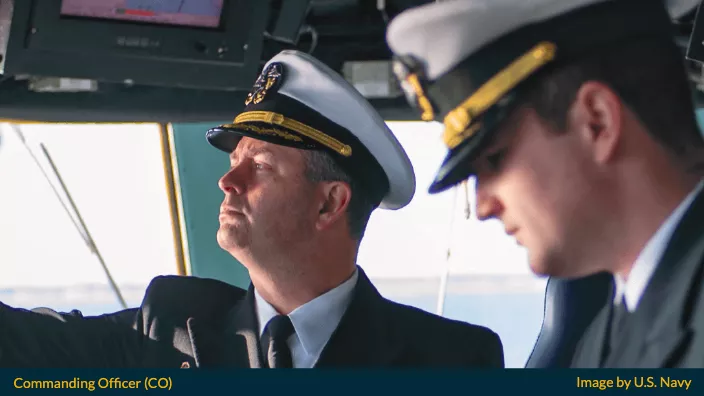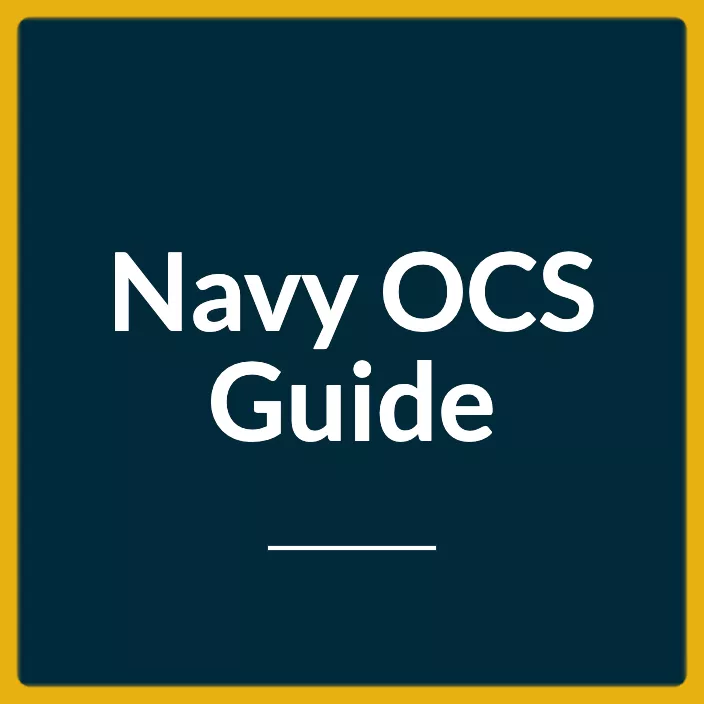Last Updated on March 4, 2024
The Commanding Officer (CO) is a role that often conjures up images of authority, leadership, and intense responsibility.
For those who are intrigued by Navy officer jobs, the position of a Navy Commanding Officer stands out as one of the most esteemed and challenging roles.
From managing fleets to making critical decisions, a CO’s job is a complex blend of multiple skill sets. So, let’s navigate deeper into the nitty-gritty of what it takes to be a Commanding Officer in the U.S. Navy.
Being a commanding officer in the navy is no small feat. It requires strong leadership skills, discipline, and a deep understanding of naval operations.
But what does it take to excel in this prestigious position?
In this article, we will explore the qualities and responsibilities of a navy commanding officer and how they play a crucial role in the success of a naval unit.
Whether you are considering a career in the Navy or simply curious about the inner workings of this esteemed position, read on to gain valuable insights into the world of a navy commanding officer.
Overview of a Navy Commanding Officer

Definition and Responsibilities
A Commanding Officer in the Navy is a senior military officer responsible for overseeing and commanding a naval unit or vessel.
They maintain discipline, ensuring operational readiness, and executing missions assigned by higher authorities.
The Commanding Officer is ultimately accountable for the safety, welfare, and performance of their personnel and the successful completion of their assigned tasks.
Depending on the assignment, this could mean overseeing a naval ship, a submarine, an aviation squadron, or a specialized unit like the Navy SEALs.
The Commanding Officer is the central figure who ensures that the unit operates efficiently and effectively.
Key Responsibilities:
- Strategic Planning: One of the core duties involves planning short-term and long-term strategies for the unit. This involves coordinating with other departments and units for combined operations.
- Personnel Management: A CO handles the welfare, training, and discipline of the personnel under their command. This role involves anything from approving leaves to conducting evaluations and promotions.
- Resource Allocation: The Commanding Officer determines how resources, such as personnel, equipment, and budget, are allocated within the unit.
- Crisis Management: When the unexpected happens—like equipment failures or unanticipated confrontations—the CO must act swiftly and decisively to manage the crisis.
- Upholding Military Law: The CO is tasked with enforcing naval laws and regulations, ensuring that every person in the unit complies.
Importance in the Naval Hierarchy
In the grand scheme of the naval hierarchy, the Commanding Officer is the linchpin that holds the unit together.
They are the immediate authority for the sailors under their command and are the final say in most operational and disciplinary matters within the unit.
Their decisions and actions often have ripple effects that can influence broader naval strategy.
Ranks of Navy Commanding Officers
Understanding the ranks of Navy Commanding Officers helps to further grasp the complexity and hierarchy involved in this role. Here’s a brief rundown:
- Lieutenant Commander: Usually commands smaller vessels like frigates, destroyers, and submarines.
- Commander: Commands larger platforms such as cruiser-class ships and could also head specialized units.
- Captain: Holds the authority to command aircraft carriers, which are the Navy’s most significant assets. Also, the rank of Captain is held by COs commanding Navy installations or bases.
- Rear Admiral (Lower Half) and Rear Admiral: In some instances, admirals may command even larger units like Carrier Strike Groups or Expeditionary Strike Groups, although this is less common. In this case, they are called “Commanders” more than COs.
Remember, while these ranks typically align with specific roles, they are easy rules. Depending on the needs of the Navy and individual career trajectories, there may be variations.
How to Become a Navy Commanding Officer
Educational Requirements
Aspiring Commanding Officers must have a solid educational foundation, typically starting with a Bachelor’s degree from an accredited institution.
Many candidates opt for a military-focused education through the United States Naval Academy, while others may go through the Naval Reserve Officer Training Corps (NROTC) program at civilian colleges.
Physical Requirements
Physical prowess is non-negotiable for a CO. Meet specific health and fitness standards, including cardiovascular tests, strength assessments, and other regimented physical evaluations.
You’ll need to pass a range of physical tests, with benchmarks for push-ups, sit-ups, and timed runs that vary by age and gender.
Experience and Progression
Becoming a Commanding Officer isn’t an overnight affair. You’ll usually start your career as an Ensign and gradually rise through the ranks.
Each step of progression comes with additional duties and responsibilities, giving you a wide range of experiences in different domains.
Only officers who have shown exemplary skills, commitment, and leadership qualities over a significant period become eligible for CO positions.
Selection Process
Candidates for the role of CO undergo a meticulous selection process. This starts with background checks to scrutinize any red flags that might disqualify them.
Psychological assessments evaluate a candidate’s mental fortitude and ability to handle stress.
A series of interviews with superiors and peer reviews are conducted to gauge the candidate’s suitability for leadership. It’s an exhaustive process designed to filter out those who aren’t up to the challenge.
Challenges and Rewards
The Tough Stuff
Being a CO is often a high-pressure job. You are the person who will endure any mistakes or failings within your unit. One small slip-up could jeopardize the mission and even lives.
A study by the Naval Postgraduate School revealed that 45 percent of removed COs were dismissed because of personal misconduct, underscoring the need for ethical, sound judgment (Naval Postgraduate School, 2019).
The Perks
Despite the challenges, there are distinct rewards to being a Commanding Officer:
- Respect and Authority: As a CO, you command an entire unit and your decisions carry weight. This position brings with it a level of respect and authority that few other roles can match.
- Competitive Salary and Benefits: The financial rewards are commensurate with the responsibility. COs receive a competitive salary along with housing allowances, retirement benefits, and medical coverage for them and their families.
- Opportunity to Shape Future Naval Operations: Your influence doesn’t stop with your unit. Decisions made at the CO level can have strategic implications, shaping the future of naval operations.
- Job Satisfaction and a Sense of Purpose: The role brings a unique level of job satisfaction, knowing you are leading a team that plays a critical role in national defense.
Conclusion
The position of a Navy Commanding Officer is an intricate blend of leadership, management, and strategy.
It demands an individual who is educationally qualified, physically fit, and morally upright. It’s a role that comes with enormous challenges but equally grand rewards.
The road to becoming a Commanding Officer is long and strenuous, yet for those who make it, the opportunities are boundless.
If you have what it takes, the rewards—both tangible and intangible—are invaluable.

